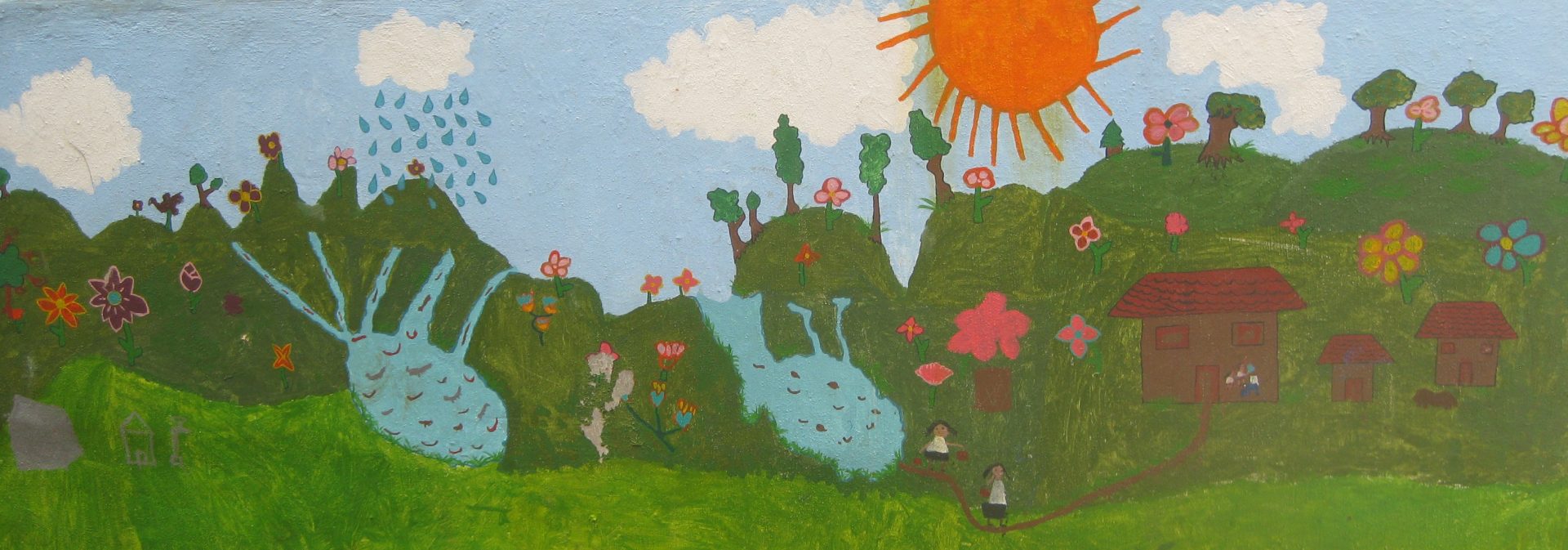We spent the first half of the day finishing off our incubator. We realized that the dimensions of our inner box were wrong, and we spent some time cutting more wood to make a new one.
After we did that and glued the inner box together, we were finally able to put in the polyurethane insulation. We didn’t have trigger clamps to hold the box together, and we had to improvise by pushing heavy cans of paint and hand soap against the box to prevent it from deforming as the polyurethane expanded. This proved to be much harder than usual. It hit me that we’ve been so fortunate to be able to work at the OEDK this entire time – everything that we could have possibly needed has always been at our disposal.
We finally met Héctor, Cantaro’s expert on water testing, who seemed pretty impressed with our design! Even though we’re pretty sure that our incubator works well, we have had a lot of difficulty testing the water samples simply because we haven’t known if our samples have been clean or contaminated, especially because we’ve been reusing our test tubes. Because of the fact that we aren’t sure what the expected results should be, we haven’t been able to confidently draw any conclusions.
Héctor explained to us how the Colilert test can be used to look for both E. coli and fecal coliforms in water samples, and showed us how a UV lamp can be used in order to test for E. coli in specific. If there is fecal coliform present in the water, the water sample will turn yellow when the Colilert test is conducted, but will glow fluorescent blue under a UV lamp if E. coli is present. Héctor also told us that our test tubes which we used to conduct the test may have been contaminated due to improper washing, resulting in even the water samples that we took from the Mesita Azul testing positive for fecal coliform. He suggested that we could possibly heat the test tubes in order to kill all the bacteria in them to prevent further contamination of water samples. However, he has a better solution – he is going to buy new Colilert test tubes to use in our incubator next. We’d thus be able to test completely uncontaminated water samples and hopefully obtain the results that we want.
Towards the end, we started having some problems with the power for our incubator. As of now, we are trying to have a USB outlet which we can plug into anything in order to power our incubator. The issue, however, is that most devices that USBs connect to, such as plug points for walls, portable power banks, and car chargers, have an output of 5 Volts. Our incubator, on the other hand requires an e.m.f. of 12 Volts in order to operate. Any lower and the amperage running through the heating system would be too low to effectively heat the test tubes to the temperature that we want. We hope to figure out this problem tomorrow. One possible solution is to connect the incubator to a 12 V D.C. to 5 V D.C. transformer, so that we can connect it to power outlets with an output of 5 V. We’re not sure, however, if the power consumption of the incubator would change by doing this.
Dealing with this problem has been very frustrating – I remember that even throughout ENGI 120 in the Fall, powering our device and getting the circuitry right was what we struggled with the most, and we found it really difficult to get guidance on the matter because none of our professors or mentors were electrical engineering experts. We eventually asked for help from Dr. Gary Woods from the Electrical and Computer Engineering department, who essentially solved the problems that we had been struggling with for weeks in a matter of minutes. Dealing with power issues once again makes me feel as though we’re back at square one. This issue has also hit me hard because I’m considering Electrical Engineering as my major at this point, and I wish I were able to figure this out. Part of me feels like the fact that I wasn’t able to do so indicates that I may not have the aptitude to pursue it. Hopefully, with some rest and some time to mull over things, we’ll be able to figure everything out.
After we left the office, we decided to try out an Italian place which we had heard very good things about, just to switch things up. We realized though, that this place was far out of our budget (it did look very nice!) and we ended up going back to Funky Burrito once again, just because we knew we’d get some fantastic burritos at a pretty decent price.
We hope that tomorrow, we’ll be able to finish building our incubator, and at least deal with the issue of powering it in some capacity. We’ll be going out to shops to check to see if there are any transformers that we can buy of appropriate voltage and current rating so that we can hopefully get our product to work.
Nikhita



Hope you had better luck with the power source today! Don’t get discouraged, it takes time to get things right, and issues keep surfacing all of the time, but that’s just part of the process. Just think of how many iterations of the Mesita Azul Cántaro has gone through!
And I do hope that using new Colilert tubes solves your issue with the testing. I was not aware that you were recycling the tubes. How were you able to do that? Wouldn’t you need to add more growth medium in order for that to work?
Also, having a temperature probe inside the tube might be a source of contamination too. The probes might be difficult to keep sterile.